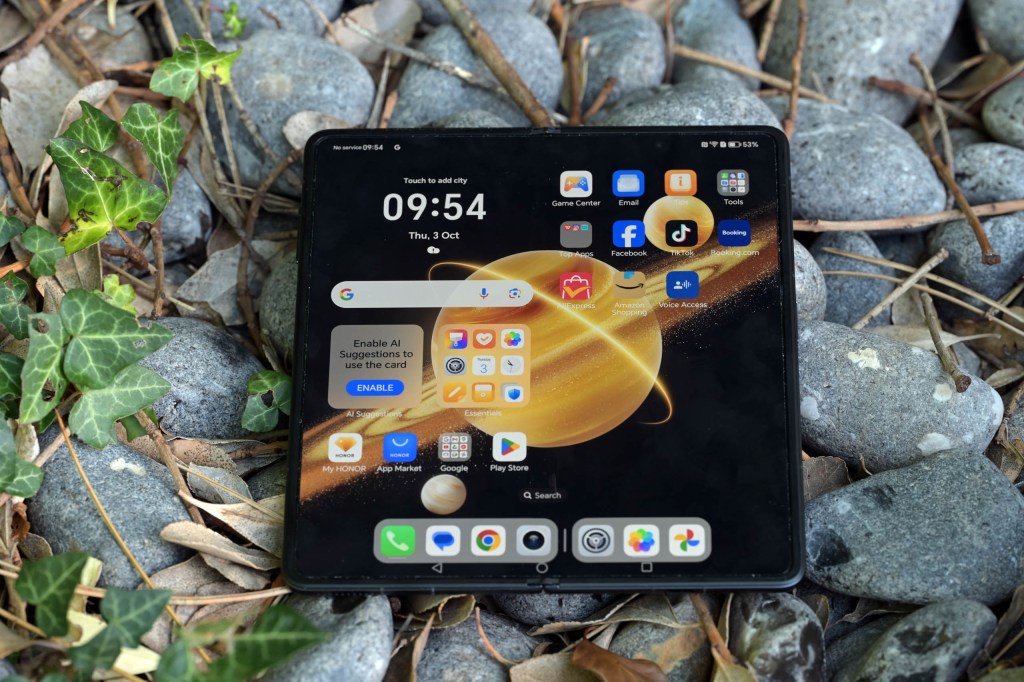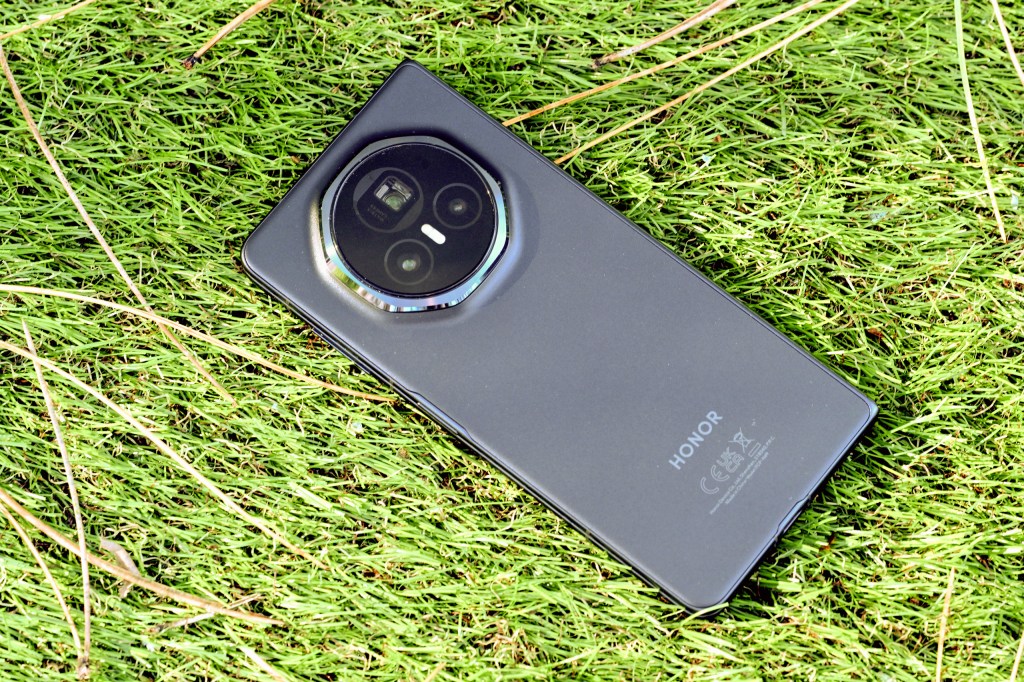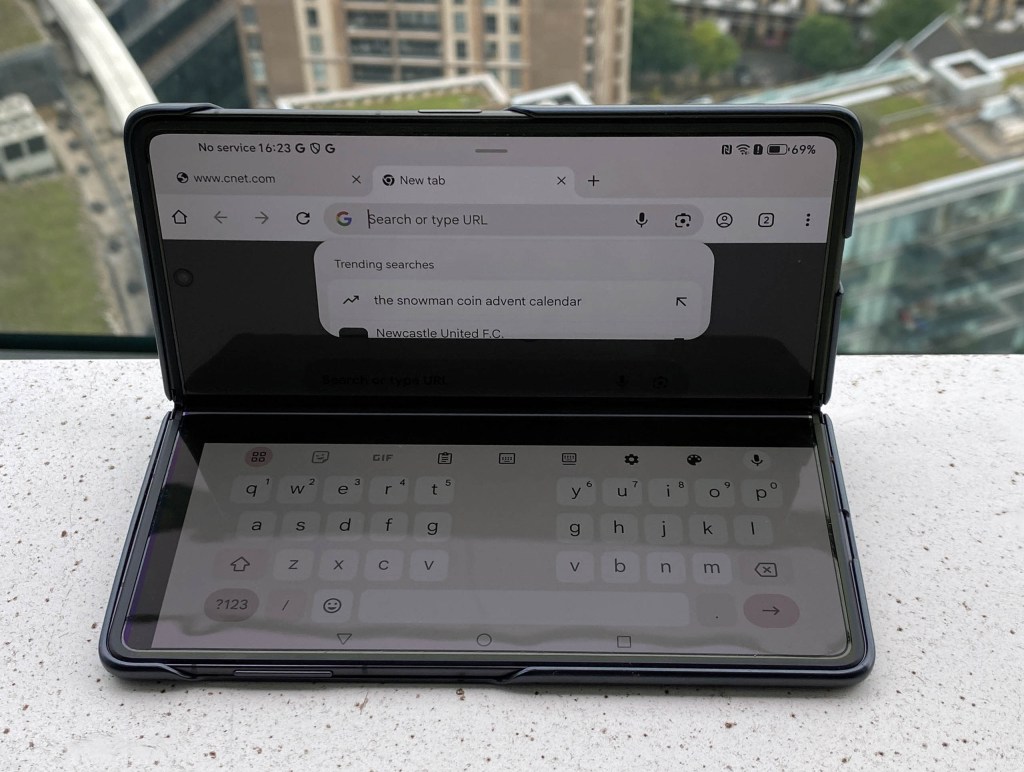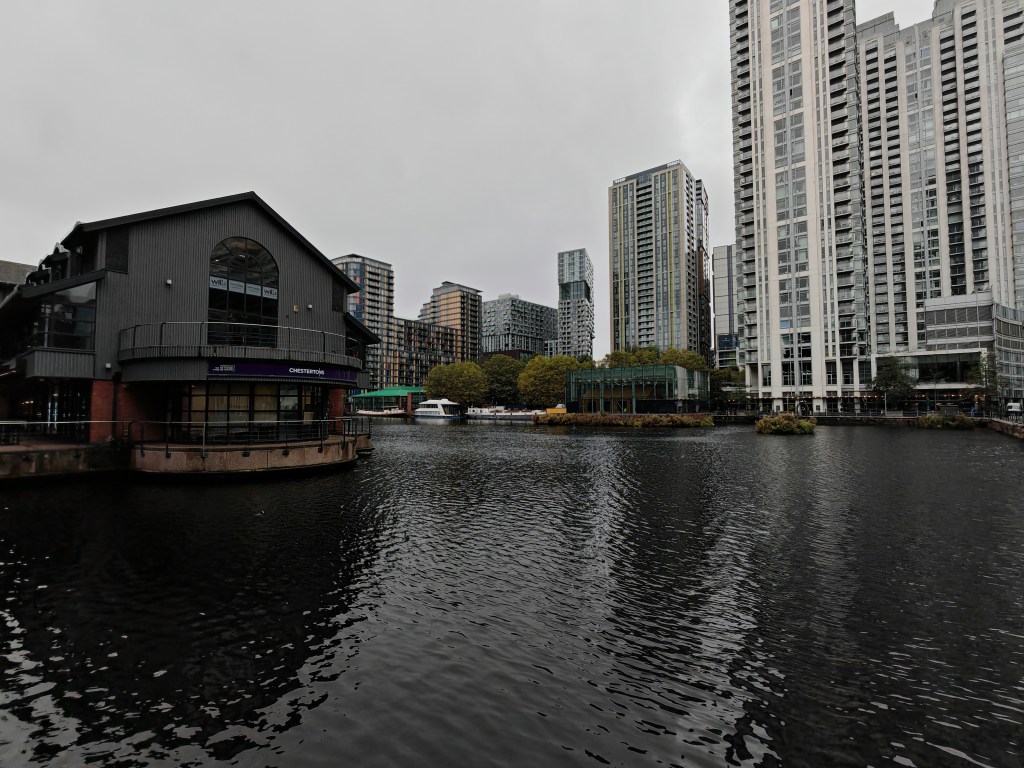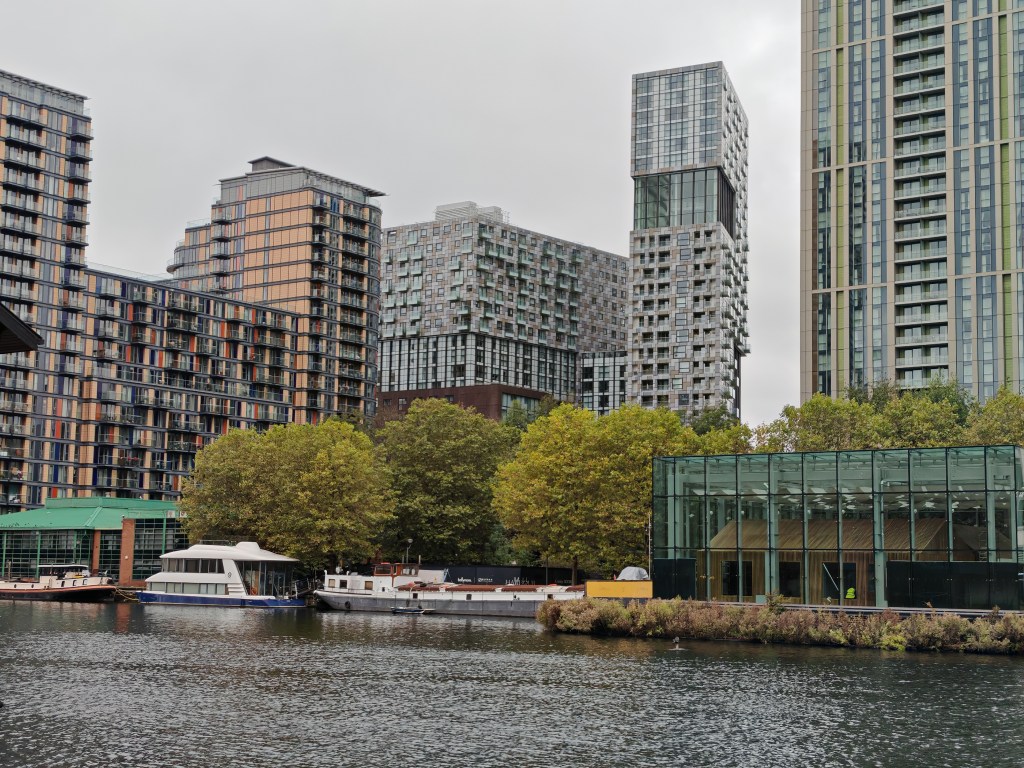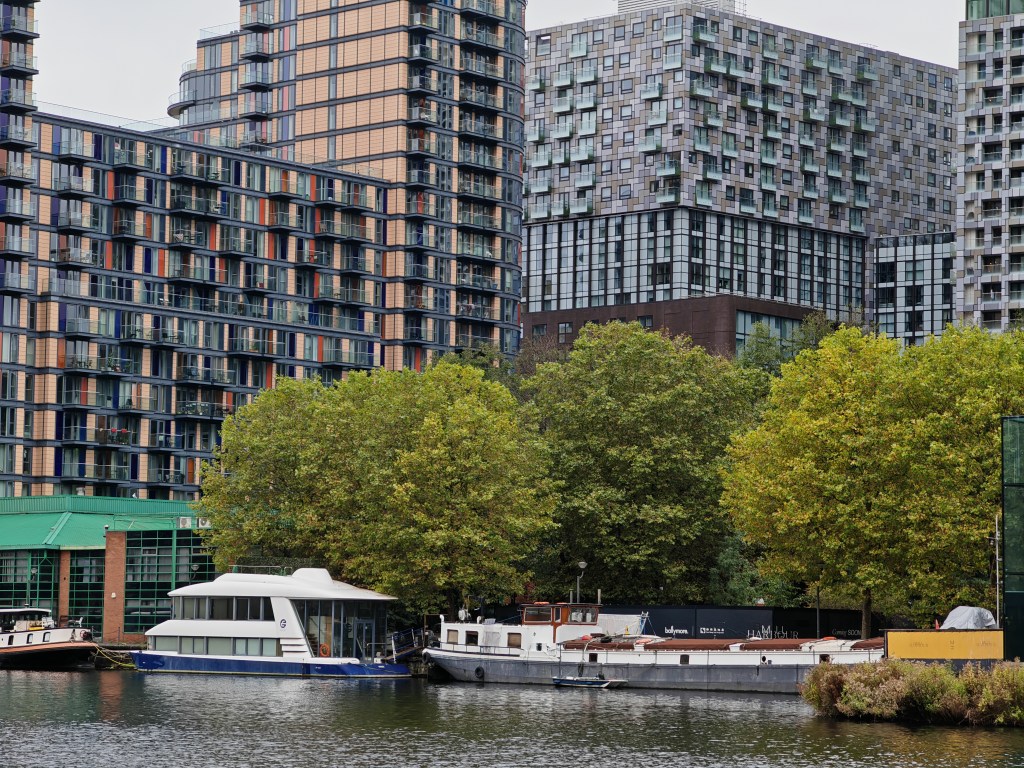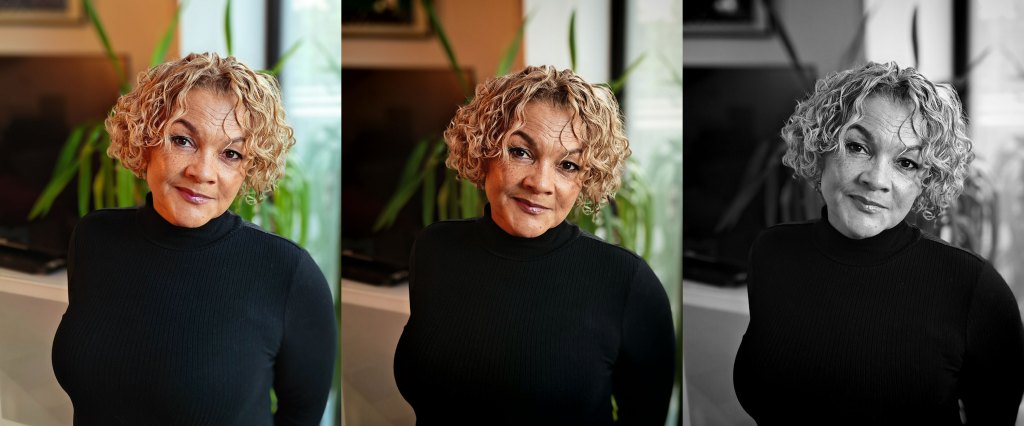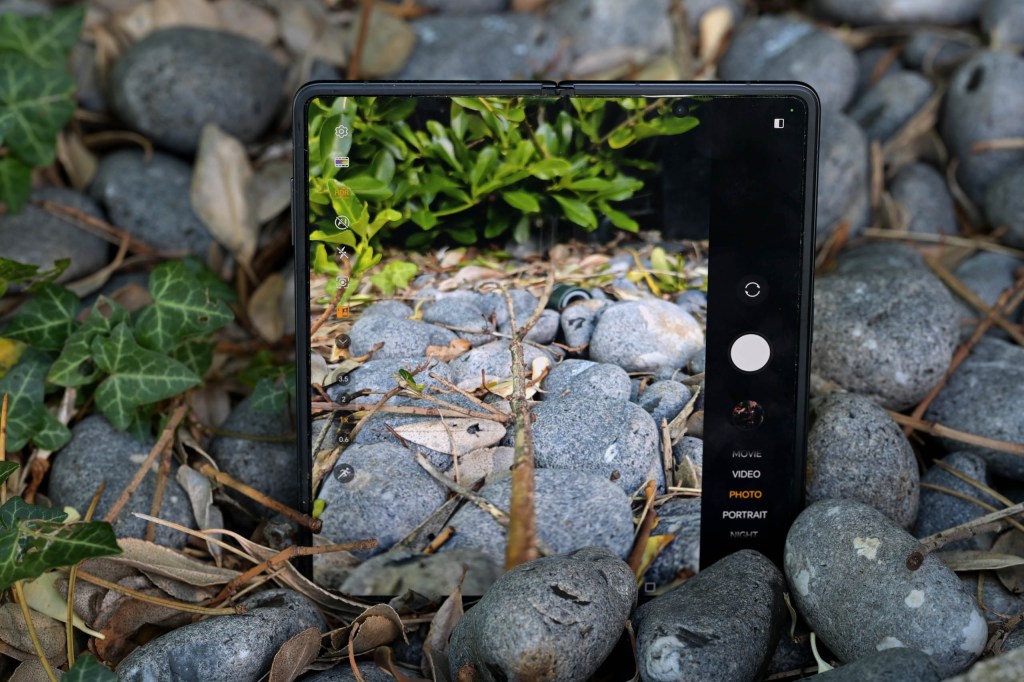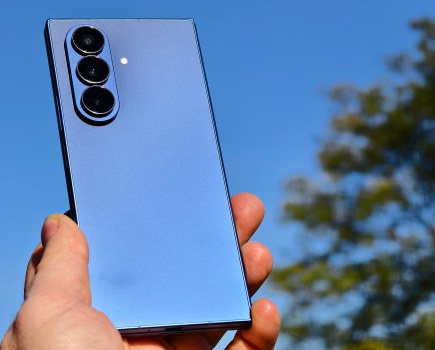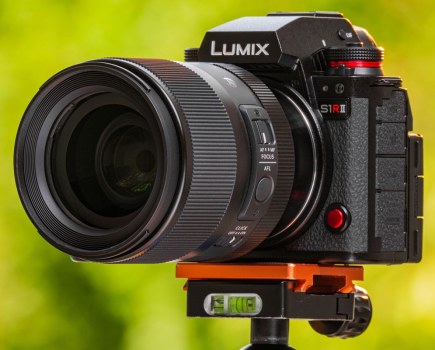Amateur Photographer verdict
The thinnest fold phone delivers good photos and videos at all focal lengths. Its a pleasure to compose and edit images on the huge screen, and thanks to its folding design it doesn’t need a tripod.- Thin and light, for a foldable
- Barely noticeable crease
- Generally good camera performance
- Pleasing to use
- Expensive
- Not available in the US
At a glance:
- 50MP Main f/1.6 23mm, 1/1.56″, OIS
- 50MP tele f/3.0 3.5x periscope zoom (90mm) OIS
- 40MP ultrawide f/2.2 112 degrees (16mm) AF
- 2x 20MP f/2.2 selfie cameras (interior/exterior)
- Video: 4K@30fps, 1080p@30fps,
- 6.3inch OLED front screen with 5000nits
- 7.92inch AMOLED main screen, 1800nits
- 5150mAh battery
- 12-16GB RAM and 256GB/512GB/1TB storage
- Android 14, Magic OS 8.0
- Dimensions 156.6 x 74 x 9.2mm (folded)
- 156.6 x 145.3 x 4.4mm (unfolded)
- Weight:226g
The foldable phones sector, one of the fastest growing segments of the smartphone industry, and the latest addition to the market is the Honor Magic V3, which claims the title of the world’s thinnest and lightest vertically folding phone – beating its own predecessor, the Honor Magic V2, which was the previous holder of the title. Despite its diminutive dimensions it offers an impressive spec list that, on paper, beats many of its competitors, such as the Samsung Galaxy Z Fold 6, the Vivo X Fold3 Pro, and the OnePlus Open.
In the UK, it is available in three colours: Velvet Black, Tundra Green, and Reddish Brown and costs £1699 for the 512GB version. (A 256GB and 1TB version are also available). I had the black version for review, but if I was buying one I’d be tempted by the brown and gold one, which looks very classy.
Honor Magic V3 – Why foldable?
Clamshell style folding phones were once all the rage but they were killed off by the iPhone, which set the agenda for what a phone should look like for over a decade. But when Samsung introduced its Fold and Flip foldable phones in 2019, with a single bendable screen that folded with the casing, they discovered that the demand for such phones hadn’t died, it had merely been dormant, waiting for the technology to catch up. Samsung is now on its sixth iteration of its Flip and Fold phones but is now no longer the sole purveyor.
There are two types of foldable: the ones that fold in half across the width to become super compact (ie the ‘flip’ phones) and those, like the Honor Magic V3, that fold along the length and open out to create a double size screen (the ‘fold’ phones). Although my wife is a flip phone addict, for me it has to be the fold style all the way. It’s like having a tablet that folds in half and goes in your pocket, and what’s not to like about that? But there are some drawbacks. Firstly, foldables are bigger and heavier, and I find that it can feel like you’re carrying two bar phones hinged together, which creates quite a bulk in your pocket. Secondly the battery life is generally not as good and, crucially from my point of view, the camera has traditionally been inferior to those in more conventional phones. And of course let’s not forget the price, because foldables tend to be considerably more expensive.
Honor Magic V3 – Handling and Design
The Honor Magic V3 goes some way to mitigating most of those disadvantages. Firstly, when folded it’s only 9.2mm thick and weighs only 226 grams. For context that’s just 1mm thicker and 5 grams heavier than the iPhone 15 Pro Max. By comparison the Samsung Fold 6 is a chunky 12.1mm deep. When opened up, the V3 becomes just 4.35mm thick.
Despite its relatively diminutive form factor the V3 feels really good in the hand. Honor has used premium, impact-resistant materials in the construction and the super-steel hinge is rated for 500,000 open and close cycles. It offers IPX 8 level water-resistance too, being submersible up to 2.5m for up to 30 minutes. I was at the phone’s launch in Berlin, where Honor showed a V3 surviving a cycle in a washing machine, clattering around the metal drum, in and out of the water for 15 minutes. Very impressive.
For extra protection the green and black versions of the V3 come with their own two-part protective case in which the metal octagonal ring around the camera housing swings out on a hinge to become a built-in kickstand, so you can stand the phone up at an angle. On the reddish brown version, which uses gold metal trim instead of black, this kickstand is built into the phone itself, rather than the case.
The Magic V3 is essentially a bar phone on the outside hiding a tablet on the inside. On one side, the cameras are now arranged within a raised octagonal hump (or dome, as Honor would prefer to call it) centred within the top third of the handset, instead of being in a row down the side like the Magic V2. I prefer this cluster layout, which is similar to the design of the recently launched Honor Magic 6. I find it easier to avoid covering one of the lenses with my finger.
On the other side is the outer cover screen, which is a full size, 6.3” OLED screen with an anti-scratch NanoCrystal shield, boasting a 120Hz refresh rate and a class-leading 5000 nits of brightness. Opening it up reveals a double-width 7.92” AMOLED screen with an almost square aspect ratio of 10:9, which provides a pixel density of 402ppi and a claimed 1600 nits of brightness. Both screens offer stylus support. One criticism of foldables is the visible crease along the fold which some users find distracting. The good news here is that the crease on the V3’s screen is very shallow and I found it to be barely noticeable in normal use, backlit from behind.
Honor Magic V3 – Features
The V3 is powered by the popular Snapdragon 8 Gen 3 chip, which is also used in many rival flagship phones, and runs Android 14 and MagicOS 8. Despite the thin profile it boasts a silicon carbon battery with a capacity of 5150 mAh, which is larger than some flagship bar phones (the iPhone 16 Pro Max battery is 4685mAh). It boasts a fast 66W charging or 50W wireless charging, (with Honor’s compatible charger) as well as 5W reverse charging, so you can use your phone to charge other devices, such as a smart watch.
With all of this screen real estate it might be tempting to spend even more time staring at it, so Honor has incorporated a variety of new technologies to help reduce eye fatigue and protect your eyesight. The V3 boasts class leading PWM dimming, which reduces screen flicker, but their headline tech is AI Defocus Eye Protection, which uses AI to modify the screen sharpness in a barely perceptible way to reduce the risk of Myopia, which is apparently increasing globally at an alarming rate due to our increased screen use.
One of the coolest Honor-specific features is Magic Portal, in which content on your main screen can be opened in a different app using a simple drag and drop action. Dragging anything to the right hand side of the screen will bring up a pop up strip featuring a selection of relevant apps. So for example, you could drag a photo or video clip onto the Gmail or WhatsApp icon to send it to someone, or the Instagram app to share it. It works with text too and it doesn’t just have to be your own content; drag any photo or piece of text from a web page onto Google search or maps, or open it in ebay or amazon to buy it. Honor uses AI to analyse the content you’ve selected and show you the most relevant apps to interact with it.
There are multiple other tricks that live up to the Magic name, such as the hugely impressive Face-to-Face Translation, in which you speak or type in your own language onto the main screen, and a text translation pops up on the cover screen in your chosen language, so the person that you’re talking to gets an almost immediate translation of what you’re saying. This is an amazing benefit to travellers and another advantage of the dual screen.
Honor Magic V3 – The cameras
The 23mm (equivalent) main camera has a 50MP sensor with an f/1.6 maximum aperture. This is accompanied by a 50MP periscope-design 3.5x zoom telephoto lens with an f/3.0 maximum aperture, which zooms up to 90mm equivalent. The third camera in the trinity is a 40MP f/2.2 ultrawide, equivalent to 16mm. The standard and tele cameras both feature optical image stabilisation. In addition to these are two identical 21mm f/2.2 selfie cameras, one on the inside screen and one on the cover screen.
Of course one of the benefits of a folding camera phone is that if you open it out you can also shoot selfies using the main 50MP camera, if you like to see yourself in high resolution. This is useful for content creators. The front cover screen can also be switched on when you’re behind the camera, so that the subject can monitor themselves when you’re photographing or filming them.
The foldable design also means that the phone can stand up unsupported in both portrait and landscape orientation. This means that you can shoot long exposures or selfies without the need of a support, such as a tripod, which I found very useful.
Honor Magic V3 – Native camera app
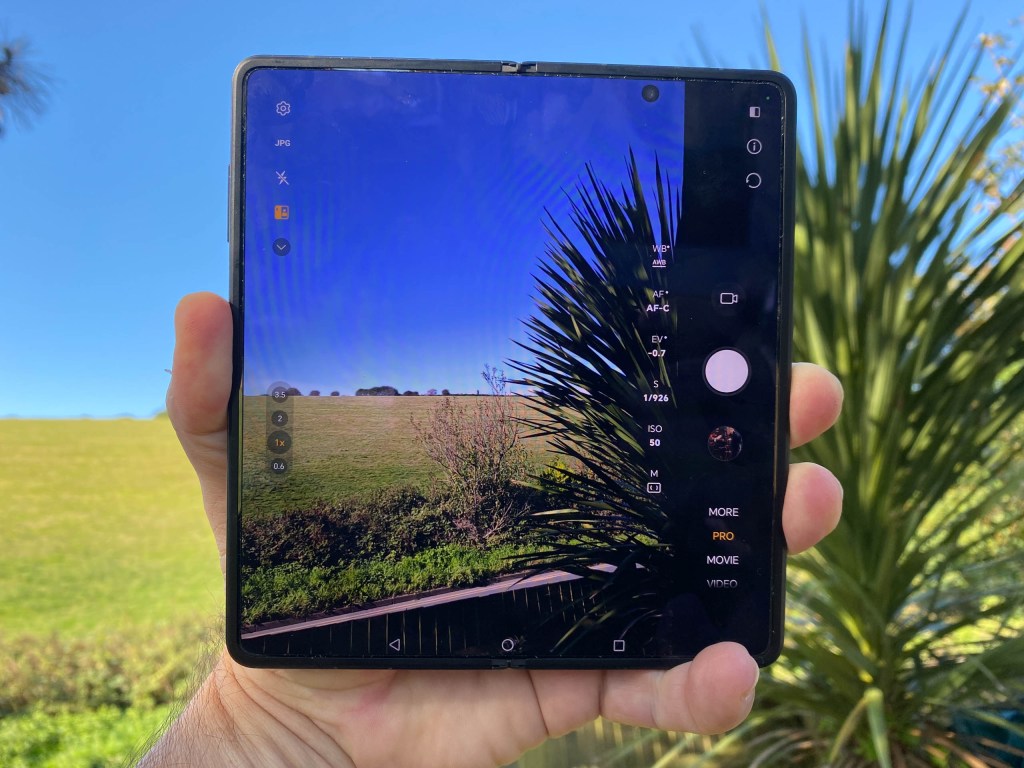
As expected, the camera interface offers the usual array of shooting modes plus a few extra ones. In the default Photo mode you get auto subject recognition, and optional tricks including a motion-sensing capture feature which takes a photo when it senses movement. Portrait mode offers a bokeh adjustment slider so you can set the level of background blur. There is also the option of selecting Honor’s Harcourt menu, a selection of three nice looking profiles created in collaboration with the Harcourt Paris photo studio, including a striking mono profile. These don’t work with the selfie cameras but, as already mentioned, the folding design means you can shoot selfies with the main cameras. Pro mode offers full control of settings including the ability to shoot in raw.


For the film-makers there’s the standard Video mode, which can shoot at up to 4K 60fps and is vertical by default. You have to rotate the phone 90 degrees tom shoot in landscape. There’s also a separate ‘movie’ mode which promises a more cinematic experience and works in landscape orientation, This offers 10-bit LOG, and a variety of stylish LUT previews that you can add later in the edit.
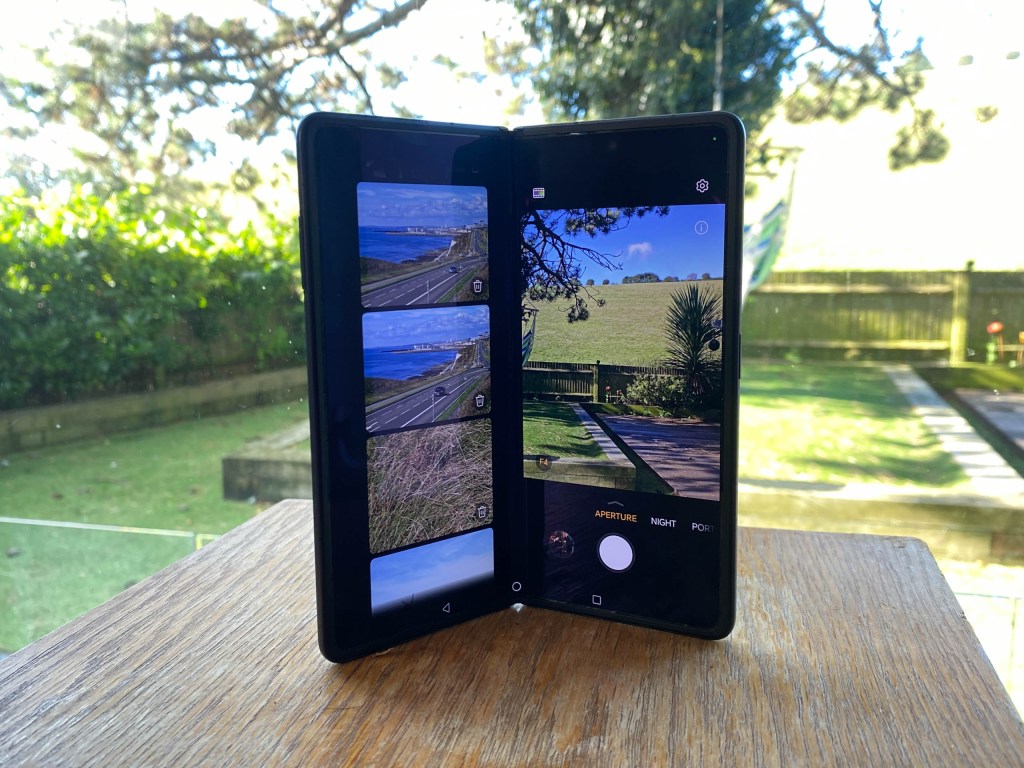
With all of the rear cameras, and in every mode, you can either shoot with the phone folded, using the cover screen, or you can open it out and use that impressive double width one inside. I found that shooting with the screen open requires two-handed operation, but then I don’t have especially long fingers. But the larger space gives more breathing room for the on-screen menu options and makes it easier to compose, tap to focus and examine the detail in your images. You can, if you prefer, choose the split-screen option, with the camera’s view on the right hand side of the screen and a film-strip of your most recently taken images on the left.
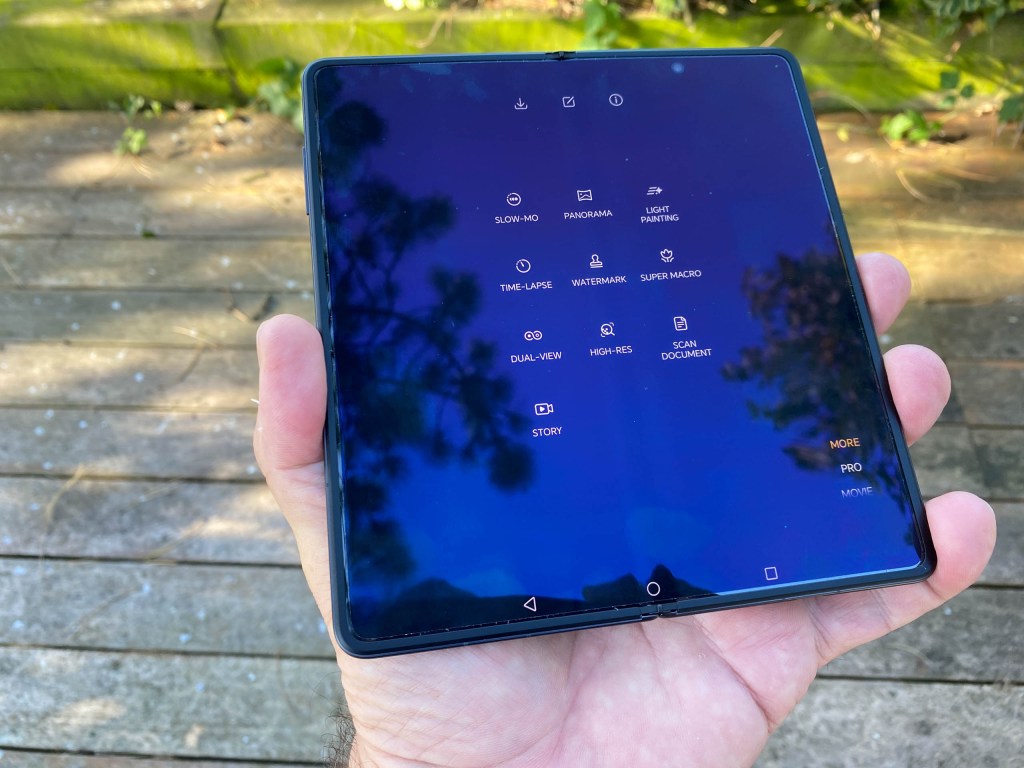
Honor Magic V3 – Image quality
By default the Honor Magic V3 outputs 12.5MP images from the 50MP cameras and 10MP from the 40MP ultrawide, but you can shoot in High-Res mode to get the full 50MP resolution if and when you may need to make giant prints, though if you did this every time you’d soon fill up your storage. And it’s unnecessary for the most part because in the default camera modes the V3 delivers impressive images that gave me no indication that I was compromising on the camera by choosing a foldable. Whether shooting in the Natural, Vibrant or Authentic profiles, colours pop nicely without being gaudy or looking over-sharpened. The standard Photo mode offers automatic scene recognition and adjusts the shooting mode accordingly.

I found the autofocus on all three main cameras to be fast, decisive and usually picked the right focus point. Moving subjects in low light can be challenging, as with any phone, but I filmed concerts in very low and constantly changing lighting and had no issues with the focus or exposure, and I was pleasantly surprised by the results. Portrait mode delivers nice portraits with a pleasing level of defocus (which you can adjust) and of course you have that telephoto lens available for a more flattering perspective. Some may find the level of default skin-softening to be a little heavy but this can also be adjusted using the beauty slider, from zero to full Madame Tussauds.
There’s a Super macro mode, available under the More menu, which uses the ultrawide camera and offers three preset levels of magnification. This enables you to get close enough to crop within a postage stamp, and the results are pretty sharp if you can hold it steady enough at that distance.

The V3 also offers a digital zoom up to 100x, and it produces acceptable images up to about 10x but beyond that things start to deteriorate pretty quickly, so it is best avoided.


When it comes to photo editing the Magic V3 supports some of Google’s cloud based AI party tricks such as the AI magic eraser, which allows you to remove people and objects from your photos simply by drawing a circle around them with your finger, and it does a pretty good job. These features are not of course exclusive to Honor.
Honor Magic V3 – Video
Whether shooting in the default 4K 30 fps mode or downsizing to a more storage-friendly Full HD, videos from the V3 setting are pleasing, with nice colours, and generally faultless exposure and white balance. The Image Stabilisation does an effective job in all modes, though walking while zoomed in is probably pushing it beyond its limits.
The addition of a more cinematic movie mode will be welcomed by filmmakers seeking higher quality and more control over the look and feel. The available LUTs vary from the subtle to the more extreme, and while serious cineastes will prefer to do their grading in post, they’re fine for creating clips with, say, an instant moonlight look. You can view additional low-light video samples, and LUT settings here.
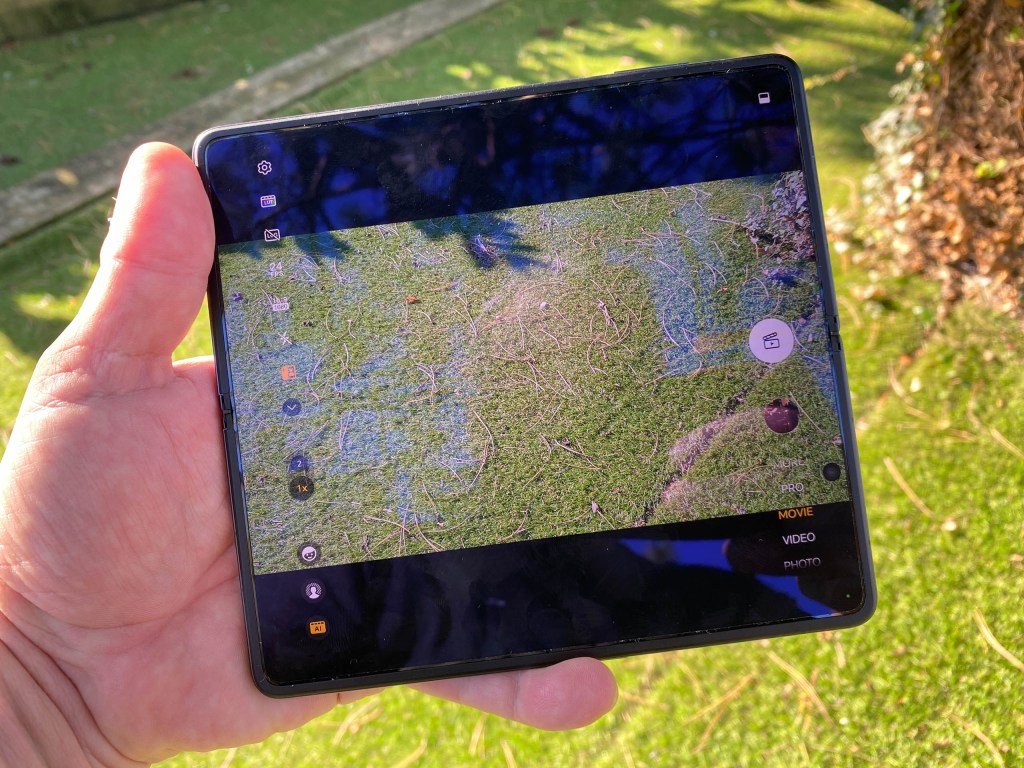
Honor Magic V3 – Verdict
Foldable phones offer so many benefits over bar phones and the only real disadvantage, apart from the cost, is the extra bulk and weight. But Honor has largely eliminated this with the Magic V3 by making it so thin and light. For photographers and content creators it’s hard not to be seduced by the ability to view and edit your shots on a tablet sized screen, to use the cover screen as a preview monitor for your subject, to shoot selfies with the main 50MP camera, and to be able to open it to 90 degrees so that it stands up on its own in either orientation without the need for a tripod.
It’s no wonder that the foldables sector is such a fast-growing one. The Magic V3, specifically, takes these benefits and adds a camera module that can cover from 16mm ultrawide to 90mm telephoto, optically, and deliver generally good photos and videos at all focal lengths in all but the most trying of circumstances. There may well be slightly better cameras available for less money on some bar phones, but the differences will be subtle and in my opinion the other benefits offered by the folding form factor more than make up for it.
The larger than average 5150mAh battery did not seem to translate to extended battery life, but given that all those screen pixels aren’t going to power themselves, it does a good job of ensuring that the power lasts for about the same amount of time as most single-screen bar phones, and the fast-charging is a welcome back-up plan.
For non-photographers the Magic Portal, Face to Face Translation and Eye Protection tech are all welcome additions. The only real negative is the price – £1,699 isn’t cheap, but you get a lot of phone for your money, and with 4 years of OS updates 5 years security updates thrown in it should last you a good while before you need to upgrade.

Related reading:
- Samsung announces Galaxy Z Flip 6 with 50MP main camera!
- Samsung Galaxy Flip 5 Review: Flipping expensive
- Motorola launches Razr 50 and Razr 50 Ultra flip phones
- OPPO brings Find N2 Flip to the UK
- OnePlus will launch its first foldable phone


